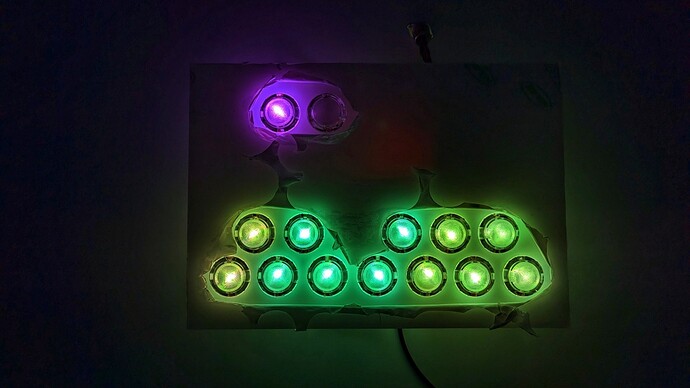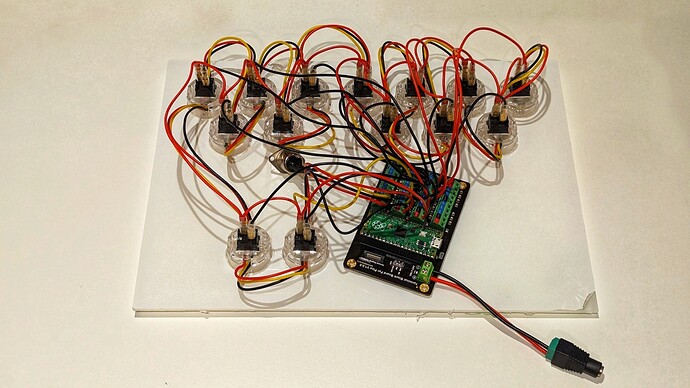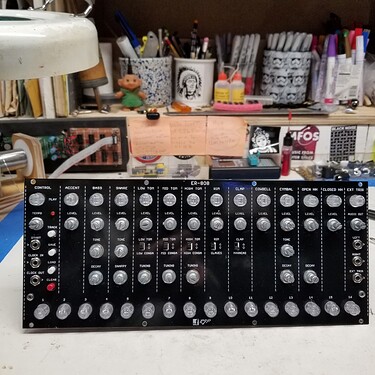More progress on my interpretation of the Super Simple Midi Keyboard today, with the recent arrivals in the post. The first problem, was the Seimitsu PS-14-K 30mm snap in arcade buttons differ from the ones Adafruit sell, so the NeoPixels mini buttons don’t fit.
No problem when you have a craft knife though. Although it turns out you can slice down either side and then just push the resulting tab out with a small screwdriver. Wish I’d discovered that on the first button, rather than the second last one…
The next problem was the NeoPixel buttons not fitting into the base plate holder of the 3D printed insert. Given that Adafruit sell the NeoPixel buttons, and have the 3D printing files in one of their tutorial, I naively assumed they just fit. I’d sent
Fancy Impact Blasters (FiB) a button, just to make sure the 3D printed inserts fitted, I should probably have sent them a NeoPixel too.
Nothing a bit of fine sandpaper and a small file couldn’t fix though. I’m not sure what use sending FiB a NeoPixel would’ve been, as each button seemed to differ slightly in width; presumably from differences when snapping them apart. I had to sand down each button and file each insert as a pair, as most buttons wouldn’t fit other inserts.

There was a break in the rain at this point, so it was out to one of the sheds to drill some holes. If I’d had my shit together, I’d have had a case laser cut by someone. As it was, I own 29mm and 30mm hole cutters, from when I used to fly high power rockets. After a test hole in an old plastic container, I decided to go with the 30mm cutter, so marked up the acrylic. Then it was time to break out the big drill.
Fourteen holes later, it was back to the desk to make some wiring looms and do a spot of soldering. I needed to add a further two NeoPixels to the chain and make a wiring loom, but was waiting on drilling the face plate to determine the length of all the wires that would be required. It took ages to crimp the common arcade button line; and I ran out of black wire, so will have to order more.
Unfortunately, during all the sanding and filing, a wire had fallen off one of the NeoPixels, and another needed some better soldering. With that done, I cleaned the back of all the NoePixel buttons with IsoPropyl and a toothbrush, which dislodged yet another wire, so out came the soldering iron again…
I though it best to test all the NeoPixels before trying to thread them into the arcade buttons, and I’m glad I did. Only half the chain were illuminated, as it turned out one of them had blown. I’m going to assume I damaged it while sanding or filing and then the IPA finished it off.
So the soldering out came back out, and I gave a little thanks to
The Pi Hut for sending me a few spare NeoPixels in my last order. With the chain all illuminating after a small code change, it was time to thread the NeoPixels into the buttons. Except I hadn’t had dinner, and it was 20:00, and I was tired, so in a break from my normal, I put everything down and came inside.
Given the state of my soldering, I figure that I should be awake and on it, before attempting to thread all those NeoPixels through those buttons. So that’s tomorrow mornings job.

























